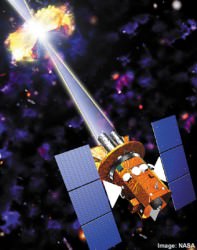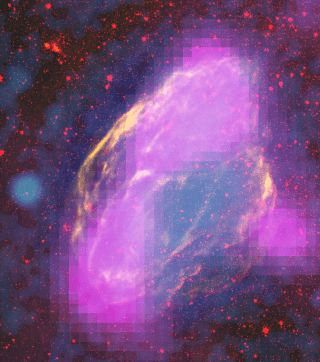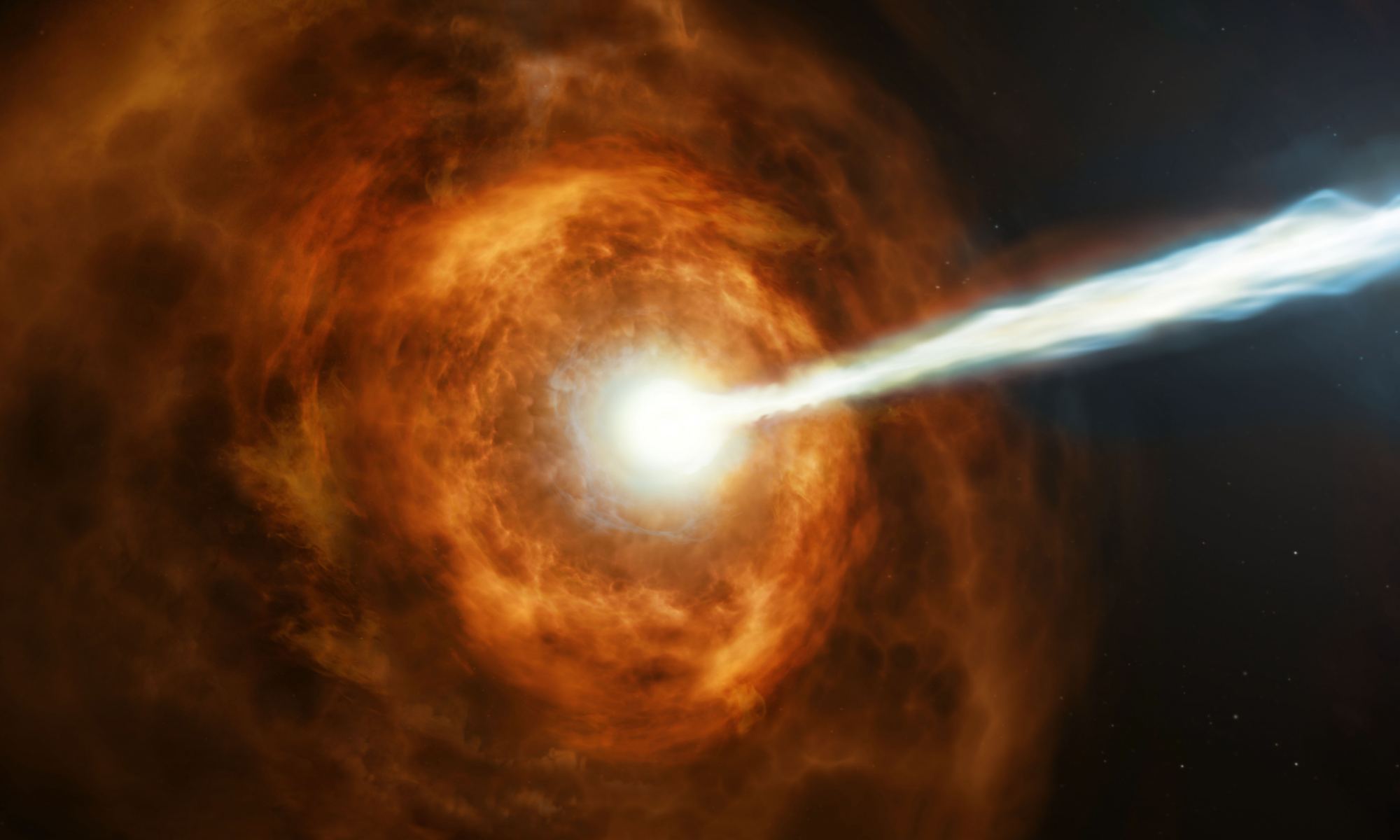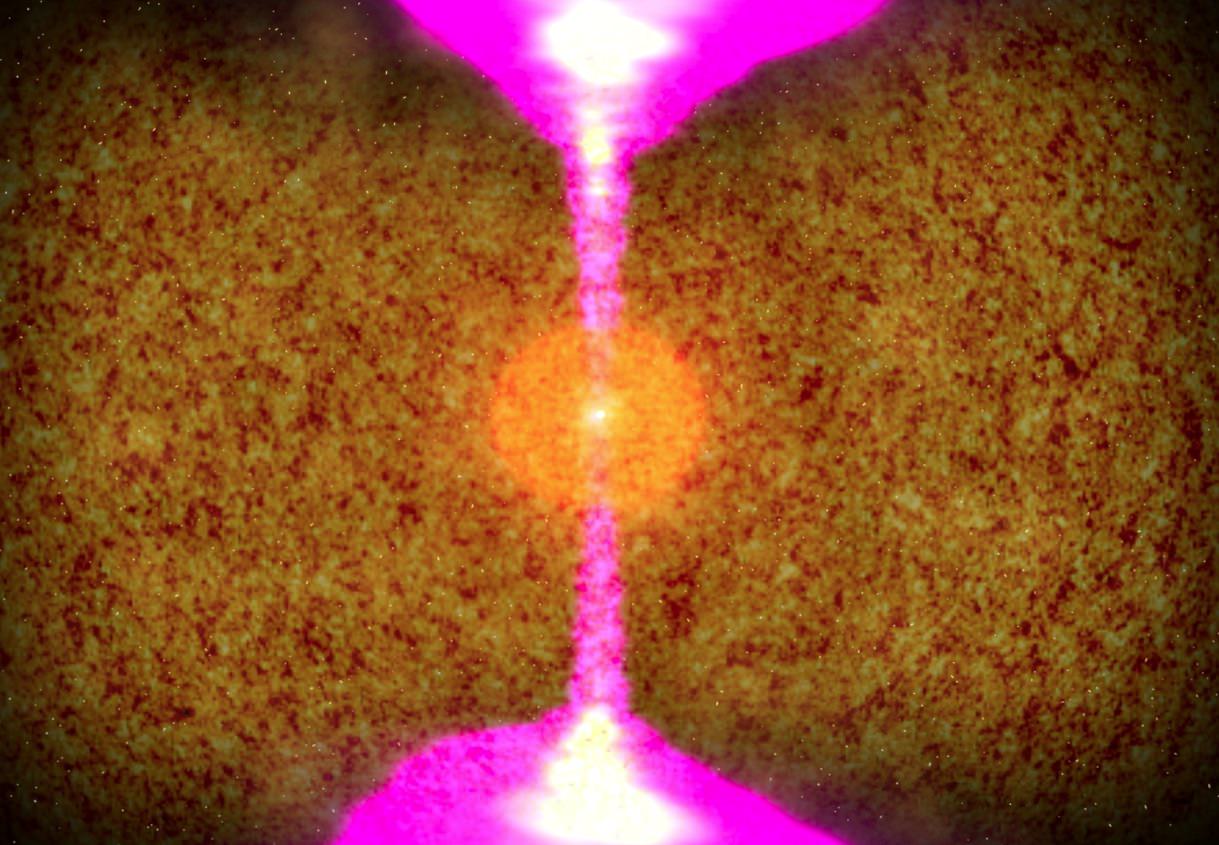CubeSats are becoming more and more capable, and it seems like every month, another CubeSat is launched doing something new and novel. So far, technology demonstration has been one of the primary goals of those missions, though the industry is moving into playing an active role in scientific discovery. However, there are still some hurdles to jump before CubeSats have as many scientific tools at their disposal as larger satellites. That is where the Space Industry Responsive Intelligent Thermal (SpIRIT) CubeSat, the first from the Univeristy of Melbourne’s Space Lab, hopes to make an impact. Late in 2023, it launched with a few novel systems to operate new scientific equipment, and its leaders published a paper a few months ago detailing the progress of its mission so far.
Continue reading “SpIRIT CubeSat Demonstrates a Operational Gamma and X-Ray Detector”Astronomers Uncover New Details in the Brightest Gamma Ray Burst Ever Detected
In October 2022, the Fermi Gamma-ray Space Telescope and the Neil Gehrels Swift Observatory detected an extraordinarily powerful Gamma Ray Burst (GRB). It still stands as the Brightest Of All Time (BOAT), and astronomers have been curious about it ever since.
New research has uncovered more details in the burst. What do they tell us about these forceful explosions?
Continue reading “Astronomers Uncover New Details in the Brightest Gamma Ray Burst Ever Detected”Did a Neutron Star Create the “Christmas Burst”?
[/caption]
On December 25, 2010, at 1:38 p.m. EST, NASA’s Swift Burst Alert Telescope detected a particularly long-lived gamma-ray burst in the constellation Andromeda. Lasting nearly half an hour, the burst (known as GRB 101225A) originated from an unknown distance, leaving astronomers to puzzle over exactly what may have created such a dazzling holiday display.
Now there’s not just one but two theories as to what caused this burst, both reported in papers by a research team from the Institute of Astrophysics in Granada, Spain. The papers will appear in the Dec. 1 issue of Nature.
Gamma-ray bursts are the Universe’s most luminous explosions. Most occur when a massive star runs out of nuclear fuel. As the star’s core collapses, it creates a black hole or neutron star that sends intense jets of gas and radiation outwards. As the jets shoot into space they strike gas previously shed by the star and heat it, generating bright afterglows.

If a GRB jet happens to be aimed towards Earth it can be detected by instruments like those aboard the Swift spacecraft.
Luckily GRBs usually come from vast distances, as they are extremely powerful and could potentially pose a danger to life on Earth should one strike directly from close enough range. Fortunately for us the odds of that happening are extremely slim… but not nonexistent. That is one reason why GRBs are of such interest to astronomers… gazing out into the Universe is, in one way, like looking down the barrels of an unknown number of distant guns.
The 2010 “Christmas burst”, as the event also called, is suspected to feature a neutron star as a key player. The incredibly dense cores that are left over after a massive star’s death, neutron stars rotate extremely rapidly and have intense magnetic fields.
One of the new theories envisions a neutron star as part of a binary system that also includes an expanding red giant. The neutron star may have potentially been engulfed by the outer atmosphere of its partner. The gravity of the neutron star would have caused it to acquire more mass and thus more momentum, making it spin faster while energizing its magnetic field. The stronger field would have then fired off some of the stellar material into space as polar jets… jets that then interacted with previously-expelled gases, creating the GRB detected by Swift.
This scenario puts the source of the Christmas burst at around 5.5 billion light-years away, which coincides with the observed location of a faint galaxy.
An alternate theory, also accepted by the research team, involves the collision of a comet-like object and a neutron star located within our own galaxy, about 10,000 light-years away. The comet-like body could have been something akin to a Kuiper Belt Object which, if in a distant orbit around a neutron star, may have survived the initial supernova blast only to end up on a spiraling path inwards.
The object, estimated to be about half the size of the asteroid Ceres, would have broken up due to tidal forces as it neared the neutron star. Debris that impacted the star would have created gamma-ray emission detectable by Swift, with later-arriving material extending the duration of the GRB into the X-ray spectrum… also coinciding with Swift’s measurements.
Both of these scenarios are in line with processes now accepted by researchers as plausible explanations for GRBs thanks to the wealth of data provided by the Swift telescope, launched in 2004.
“The beauty of the Christmas burst is that we must invoke two exotic scenarios to explain it, but such rare oddballs will help us advance the field,” said Chryssa Kouveliotou, a co-author of the study at NASA’s Marshall Space Flight Center in Huntsville, Alabama.
More observations using other instruments, such as the Hubble Space Telescope, will be needed to discern which of the two theories is most likely the case… or perhaps rule out both, which would mean something else entirely is the source of the 2010 Christmas burst!
Read more on the NASA mission site here.
What Are Gamma Rays

[/caption]
In the universe there are kinds of energy and different ways it manifests itself. One common form is radiation. Radiation is the wave energy produced by electromagnetic forces. There are different kinds and their strength can be divided into three categories. There are alpha rays, beta rays, and finally gamma rays. Essentially each example is high energy particles traveling in a straight line. However, there are limits for level. Alpha rays are the weakest and can be blocked by human skin and gamma rays are the strongest and only dense elements like lead can block them.
So what are gamma rays? Gamma rays are the strongest from of radiation. This is what makes nuclear radiation so dangerous. This high energy form of radiation can damage human tissue and cause mutations. In circumstances where gamma radiation is plentiful most life forms would be killed within a short amount of time.
Gamma rays differ from alpha and beta waves in their composition. Alpha and beta rays are composed of discrete subatomic particles. This is part of the reason why these rays are more easily deflected by less dense matter. Gamma rays are on a whole different level. They are pure energy and radiation so only the most dense kind of matter can deflect it.
Gamma rays can be found practically anywhere in the universe. The best example is celestial bodies like the sun, pulsars, and white dwarfs. Each of these are massive sources energy burning off hydrogen in massive nuclear reactions. This produces massive amounts of radiation in the form of rays. Outside of the Earth’s protective atmosphere the radiation manifests itself in cosmic rays. Cosmic rays carry tremendous amounts of energy but what makes them pack such a punch are the gamma rays that they are made up of.
The most interesting characteristic of gamma rays is that they don’t have a uniform energy level. In some cases the energy levels vary so much you can have gamma rays that meet every criterion for the term but in the end have less energy than an x ray from a X ray machine at the hospital. The energy of the gamma ray largely depends on the source and production of the radiation.
In the end Gamma rays are one the many interesting energy phenomena in our universe and scientist are constantly looking to learn more about them and gain a better understanding of their properties.
We have written many articles about Gamma Ray for Universe Today. Here’s an article about Gamma Rays, and here are the Top Ten Gamma Ray Sources from the Fermi Telescope.
If you’d like more info on Gamma Rays, check out the NASA Official Fermi Website. And here’s a link to NASA’s Article on Gamma Rays.
We’ve also recorded an episode of Astronomy Cast all about planet Earth. Listen here, Episode 136: Gamma Ray Astronomy.



